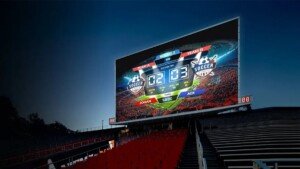In today’s competitive retail environment, businesses are constantly seeking innovative ways to attract customers and maximize engagement. One of the most effective yet often underutilized strategies is Harnessing the Power of Window Display Signage. A well-designed window display can transform a storefront from an ordinary exterior into a magnetic attraction that draws foot traffic, communicates brand identity, and ultimately drives sales. This article explores the nuances of creating compelling window displays, integrating modern technologies, and understanding customer behavior to enhance engagement.
Understanding Window Display Signage
Window display signage encompasses a wide array of visual elements placed in storefront windows to attract and inform potential customers. These can range from static posters and vinyl graphics to dynamic LED screens and interactive installations. At its core, Harnessing the Power of Window Display Signage involves understanding human psychology—how colors, lighting, and composition influence emotions and behaviors. For instance, vibrant colors can evoke excitement, while minimalist designs might convey sophistication.
Historically, window displays date back to the 19th century with the rise of department stores, where elaborate setups showcased merchandise in creative ways. Today, with advancements in materials and technology, signage has evolved. Businesses now use high-resolution prints, neon lights, and even augmented reality overlays to create immersive experiences. The key to success lies in alignment with brand identity; a mismatched display can confuse or repel customers rather than engage them.
Moreover, effective signage must consider visibility from various angles and distances. Factors like window size, street traffic, and lighting conditions play crucial roles. By Harnessing the Power of Window Display Signage, retailers can not only increase foot traffic but also build brand recall. Studies show that well-designed windows can boost store visits by up to 30%, highlighting the direct impact on engagement metrics.
The Psychological Impact of Window Displays
Visual merchandising is a science that taps into human psychology. Retail experts have long recognized that customers often make purchasing decisions within seconds of seeing a display. Harnessing the Power of Window Display Signage allows retailers to capture attention and influence buying behavior before customers even enter the store. A display that is vibrant, informative, and strategically arranged can evoke curiosity, emotional responses, and a sense of urgency, encouraging immediate interaction.
Colors, lighting, and placement are critical components. For instance, bright colors and high-contrast elements naturally draw the eye, while strategic lighting highlights key products and creates an inviting ambiance. By understanding these psychological triggers, businesses can design window displays that resonate with their target audience and encourage prolonged engagement.
Maximizing Engagement with Interactive Elements
Adding interactive elements is a powerful way to increase foot traffic and dwell time. Touch screens, motion sensors, and even augmented reality experiences enable customers to engage directly with the display. This concept is closely related to The Benefits of Implementing Touchscreen Information Kiosks, which allow users to explore products, browse promotions, or customize their shopping experience. By bringing this interactivity to window displays, retailers can entice passersby to participate actively rather than merely observe.
Such engagement not only captivates potential customers but also provides valuable data on consumer preferences, helping brands tailor future marketing strategies. Interactive window displays create memorable experiences that differentiate a store from competitors, fostering loyalty and repeat visits.
 Incorporating Digital Signage for Enhanced Interaction
Incorporating Digital Signage for Enhanced Interaction
The integration of digital technologies into window displays has revolutionized the way retailers engage with customers. Digital signage offers dynamic content capabilities, enabling stores to Harness the Power of Window Display Signage in a way that static displays cannot. Motion graphics, videos, and interactive touchpoints allow for storytelling, promotions, and real-time updates. Digital window signage can also adapt content based on the time of day, weather conditions, or special events, making the shopping experience more personalized and relevant.
Retailers interested in this approach often refer to resources like the Digital Display Buying Guide, which helps them understand the range of options, from high-resolution screens to weatherproof outdoor displays. By carefully selecting the right technology, stores can optimize customer interaction and increase dwell time.
Storytelling Through Window Displays
A key strategy for Harnessing the Power of Window Display Signage lies in effective storytelling. Rather than simply showcasing products, successful displays tell a narrative that aligns with the brand’s identity. For example, a fashion retailer might create seasonal storylines—such as a winter wonderland or tropical summer scene—that feature clothing in a contextual, lifestyle-driven manner. Storytelling encourages emotional engagement, making customers more likely to enter the store and explore further.
Additionally, storytelling can incorporate subtle hints of interactivity. QR codes or small screens integrated into the display can provide product information, styling tips, or social media engagement opportunities. This creates a seamless bridge between physical and digital experiences, enhancing overall customer interaction.
Seasonal and Thematic Displays
Seasonal themes offer a unique opportunity for retailers to Harness the Power of Window Display Signage by aligning their messaging with customers’ current interests and needs. Holiday seasons, back-to-school periods, or major cultural events are excellent occasions to create visually striking displays that attract attention. Effective seasonal displays often blend traditional merchandising techniques with digital elements, such as screens showing holiday promotions or interactive holiday-themed games for children.
Thematic displays also help retailers communicate brand values and showcase new product lines. By presenting products in a contextually relevant and aesthetically appealing way, stores increase the likelihood of turning casual observers into committed customers.
 Strategic Placement and Layout
Strategic Placement and Layout
Location is critical when designing window displays. To maximize impact, retailers must consider sightlines, pedestrian traffic, and ambient lighting. Harnessing the Power of Window Display Signage requires more than placing a product behind glass; it demands thoughtful arrangement that highlights focal points, guides the customer’s eye, and encourages a natural flow of movement. Strategic use of space, balance, and proportion ensures that the display is visually appealing without being cluttered or overwhelming.
Additionally, retailers can experiment with different display heights, layering techniques, and props to create depth and interest. Incorporating mirrors, reflective surfaces, or transparent materials can further enhance the visual appeal and attract attention from multiple angles.
Addressing Common Challenges
While the benefits of window displays are significant, businesses must navigate certain challenges to ensure success. Challenges of installing outdoor digital displays include weatherproofing, security, and maintenance. High-quality screens must withstand environmental conditions such as sunlight, rain, and temperature fluctuations. Additionally, content management systems need to be reliable to update promotions seamlessly and avoid downtime that can negatively impact engagement.
By understanding and proactively addressing these challenges, retailers can maintain displays that consistently attract and engage customers without incurring excessive costs or operational difficulties.
Design Principles for Effective Window Signage
To effectively Harness the Power of Window Display Signage, retailers must adhere to key design principles. Simplicity, clarity, and visual hierarchy are paramount. The main message should be immediately identifiable, with secondary details supporting the narrative. Strategic use of typography, color contrast, and lighting ensures that the display communicates effectively even from a distance.
For those seeking expert guidance, consulting materials such as Important tips for designing a Digital Signage to attract customers can provide actionable insights on creating displays that maximize engagement and conversion rates. These tips often include advice on focal points, messaging frequency, and interactive elements to keep the display fresh and captivating.
Measuring Success and ROI
Measuring the effectiveness of window displays is essential for continuous improvement. Metrics such as foot traffic, dwell time, social media mentions, and conversion rates help retailers gauge engagement. Advanced analytics tools can track interactions with digital signage, revealing which content resonates most with the audience. This data-driven approach ensures that investments in window displays translate into tangible business outcomes.
Regularly refreshing content and experimenting with new formats also helps maintain customer interest. By continuously testing and optimizing, retailers can sustain high levels of engagement over time, ensuring that window displays remain a powerful tool for marketing.
Future Trends in Window Display Signage
The future of window displays is increasingly digital, immersive, and interactive. Technologies such as augmented reality, projection mapping, and AI-driven personalization promise to elevate customer engagement further. Retailers who stay ahead of these trends will find innovative ways to Harness the Power of Window Display Signage, offering experiences that are memorable, entertaining, and effective in driving sales.
Moreover, sustainability and eco-friendly materials are becoming integral to window display design. By combining aesthetics with environmental consciousness, brands can appeal to socially aware consumers while maintaining a competitive edge.
Conclusion
In conclusion, maximizing customer engagement through Harnessing the Power of Window Display Signage requires a strategic blend of psychology, technology, creativity, and analytics. From storytelling and interactivity to seasonal themes and design principles, effective window displays are more than mere decoration—they are a critical touchpoint in the customer journey. By embracing modern digital tools, addressing common challenges, and continually optimizing design and content, retailers can transform their storefronts into engaging, revenue-driving experiences.
Additionally, integrating related innovations such as The Benefits of Implementing Touchscreen Information Kiosks, leveraging guidance from the Digital Display Buying Guide, navigating Challenges of installing outdoor digital displays, and following Important tips for designing a Digital Signage to attract customers ensures that each element of a display contributes to a cohesive and compelling customer experience. Businesses that master these strategies will not only attract attention but also foster loyalty, encourage repeat visits, and ultimately boost their bottom line.




